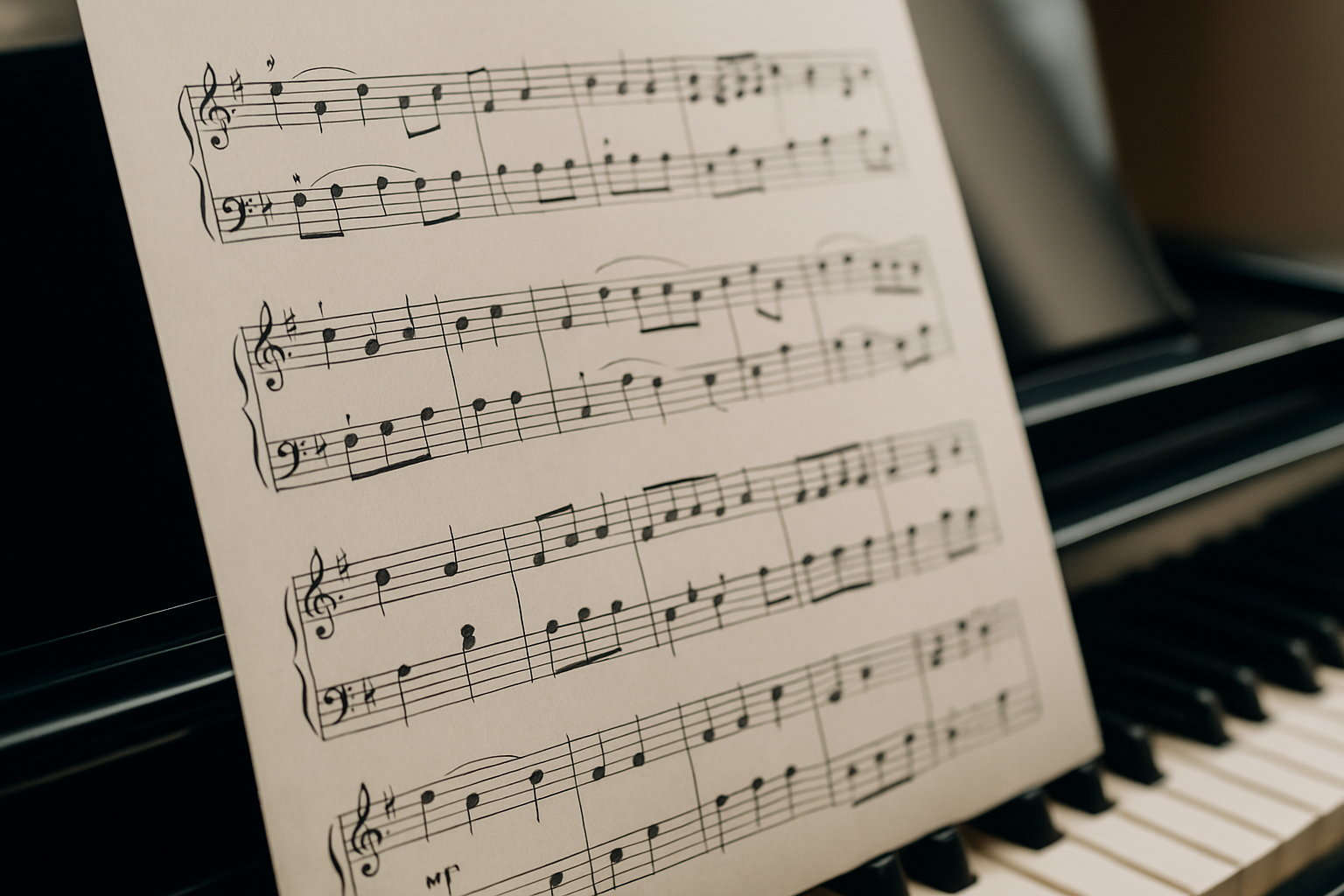When learning music, beginners often focus on single notes, chords, or rhythms. While these elements are essential, there is another concept that connects them all: intervals. An interval is simply the distance between two notes, and it is one of the most fundamental building blocks of music. Understanding intervals helps you read music faster, recognize melodies by ear, and create harmonies with confidence.
In this article, we’ll explore what intervals are, why they matter, the different types, and how to practice them effectively.
What Is an Interval?
An interval is the distance in pitch between two notes. For example, the space between C and D is an interval of a second, while the space between C and G is an interval of a fifth. Intervals can be measured by counting the number of letter names between two notes (C–D is two letters, C–G is five letters) and by their specific sound qualities.
Why Intervals Are Important
1. Ear Training
Recognizing intervals by sound allows you to identify melodies and harmonies without looking at sheet music.
2. Reading Music Faster
When you see notes on a staff, instead of thinking note by note, you can read them as intervals. This speeds up sight-reading.
3. Building Chords
Chords are made of stacked intervals. Knowing intervals helps you understand how chords are constructed.
4. Improvisation
Improvisers rely on intervals to create melodic lines that fit the harmony.
5. Composition
Understanding intervals helps composers craft melodies that are singable and emotionally effective.
Types of Intervals
Simple vs. Compound Intervals
- Simple intervals: Within an octave (C to E, C to G).
- Compound intervals: Larger than an octave (C to E one octave higher).
Perfect Intervals
Some intervals are considered “perfect” because of their stability. These include:
- Perfect unison (C–C)
- Perfect fourth (C–F)
- Perfect fifth (C–G)
- Perfect octave (C–C, eight notes apart)
Major and Minor Intervals
- Major intervals: Sound bright (C–E, C–A).
- Minor intervals: Slightly smaller, sound darker (C–Eb, C–Ab).
Augmented and Diminished Intervals
- Augmented: One step larger than perfect or major (C–G# is an augmented fifth).
- Diminished: One step smaller than perfect or minor (C–Gb is a diminished fifth).
Interval Names and Their Sounds
- Unison (C–C): Same note.
- Minor second (C–Db): Very close, tense sound.
- Major second (C–D): Step up, common in scales.
- Minor third (C–Eb): Sad or emotional sound.
- Major third (C–E): Bright, common in major chords.
- Perfect fourth (C–F): Stable, used in melodies.
- Tritone (C–F#): Dissonant, also called diminished fifth.
- Perfect fifth (C–G): Strong, used in power chords.
- Minor sixth (C–Ab): Expressive, bittersweet.
- Major sixth (C–A): Warm and uplifting.
- Minor seventh (C–Bb): Jazzy and soulful.
- Major seventh (C–B): Tense, leading to resolution.
- Octave (C–C): Same note, higher pitch.
Practical Exercises to Learn Intervals
1. Singing Intervals
Choose two notes and sing them. Start with simple ones like unison, octave, and perfect fifth. Singing strengthens ear recognition.
2. Relating Intervals to Songs
Connect intervals to familiar melodies:
- Minor second: “Jaws” theme.
- Major third: “When the Saints Go Marching In.”
- Perfect fourth: “Here Comes the Bride.”
- Perfect fifth: “Twinkle, Twinkle, Little Star.”
3. Interval Flashcards
Write intervals on cards and test yourself visually and aurally.
4. Instrument Drills
On piano or guitar, pick a note and play intervals above it. For example, start with C and play C–E (major third), C–F (perfect fourth), C–G (perfect fifth).
5. Call-and-Response Practice
Play an interval and try to sing or play it back. This builds instant recognition.
Applying Intervals in Practice
In Scales
Scales are made of stepwise intervals (seconds). Recognizing this helps you move smoothly through scales.
In Chords
Major chords = root, major third, perfect fifth.
Minor chords = root, minor third, perfect fifth.
Seventh chords = root, third, fifth, seventh.
In Melody
Melodies combine small intervals for smooth movement and larger intervals for drama. Analyzing songs helps you see how composers use intervals.
In Improvisation
Try improvising using only certain intervals. For example, create a melody using thirds and fifths. This adds variety and control.
Common Mistakes When Learning Intervals
- Relying Only on Memorization – Understanding how they sound is more effective than just memorizing.
- Ignoring Singing – Singing intervals improves ear training much faster than just playing.
- Skipping Practice – Interval recognition requires daily reinforcement.
- Confusing Major and Minor – Beginners often mix them up. Careful listening fixes this.
Long-Term Benefits of Mastering Intervals
- Faster sight-reading.
- Stronger ear training and recognition.
- Ability to transcribe songs by ear.
- More expressive improvisation and composition.
- Deeper understanding of harmony.
Final Thoughts: Intervals as the DNA of Music
Intervals may seem abstract at first, but they are the DNA of music. Every melody, chord, and harmony is built from them. By learning to hear, recognize, and apply intervals in practice, you open the door to greater musical freedom.
So the next time you sit with your instrument, don’t just practice scales or chords—pay attention to the spaces between notes. Master those, and you’ll unlock one of the most powerful tools for becoming a confident and creative musician.
